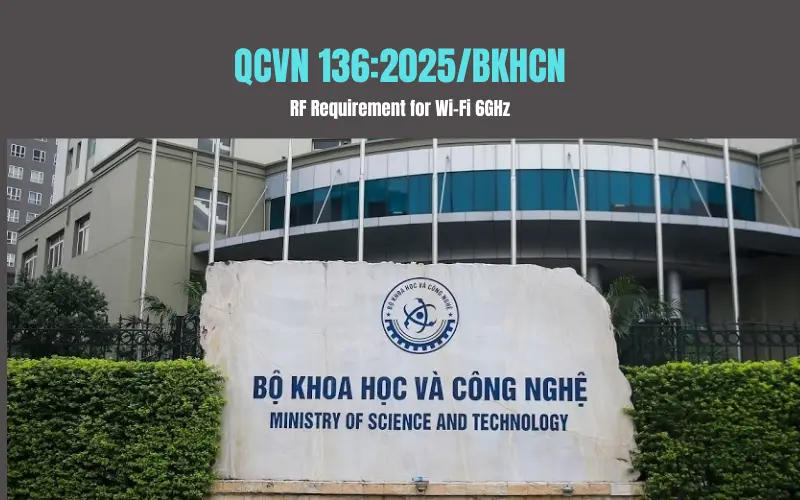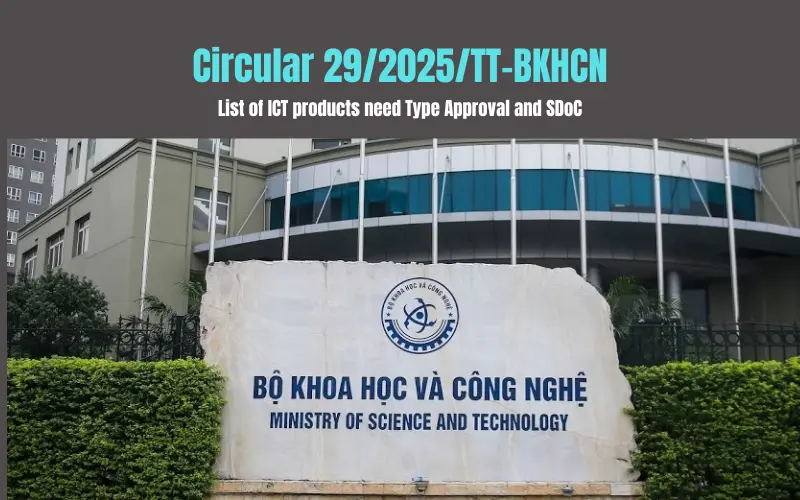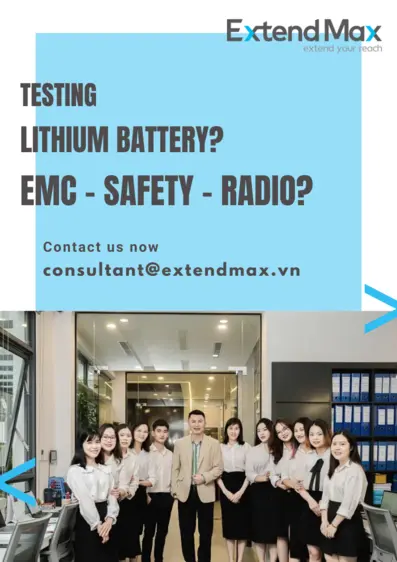During the consultation process with businesses, we have received many inquiries about compliance certification according to Method 7. In fact, many companies have incorrectly followed the procedure for Method 7 compliance certification, resulting in test results not being accepted for conformity assessment. This article will provide you with an overview and delve into the specifics of the definition, process, benefits, and limitations of Method 7 compliance certification, as well as important points to note.
Certification method 7 is also know as Certification system 7 in Vietnam

CEO ExtendMax - Trần Thanh Phương (Alex) - Leading expert in Conformity Certification and Conformity Declaration
Definition of Conformity Certification by Method 7
Based on Circular No. 28/2012/TT-BKHCN on regulations for the declaration of conformity and methods of assessing conformity with standards and technical regulations, the definition of conformity certification by method 7 (also known as batch certification) can be provided as follows:
>>> Learn more: Overview of Conformity Certification and Certification Methods
Definition of a Batch of Products or Goods
Circular No. 30/2011/TT-BTTTT defines "a batch of products as a set of a single type of goods determined by quantity, having the same name, use, brand, type, technical characteristics, from the same production facility, origin, and belonging to the same import dossier."
However, according to ExtendMax's viewpoint:
- Certification by batch can also be applied to domestically produced products and goods (which do not have an import dossier).
- The Law on Product and Goods Quality has separate definitions for "products" and "goods". Also, according to the Law on Product and Goods Quality, products may not necessarily be goods.
Therefore, we provisionally define a batch of products or goods as follows:
Products and Goods Subject to Batch Conformity Certification
Conformity certification by method 7 is widely applied to many industries, especially to types of products and goods requiring high safety standards. Below is a detailed list of some types of products that are subject to batch conformity certification by method 7:
| Product and goods | Managing Ministry | Alternative methods | Ghi chú |
| Toy for children | Ministry of Science and Technology | Method 5 | |
| Thiết bị điện tử, điện gia dụng | Ministry of Science and Technology | Method 5 | |
| Lithium battery used for e-bike and e-motobike | Ministry of Transport | Method 5 | |
| GPS tracker | Ministry of Transport | Method 4 | Only Apply Method 4 to Domestically Produced Goods |
| Personal Protective Equipment | Ministry of Labor, War Invalids and Social Affairs | Method 5 | |
| Iron and alloy steel | Ministry of Science and Technology | Method 5 | |
| IT and wireless products | Bộ Thông tin và Truyền thông | Method 1, Method 5 | Method 1 can only be applied as a substitute when the manufacturer has an ISO 9001 certificate The Telecom Metrology and Quality Center has not applied Method 5 to Imported Products and Goods |
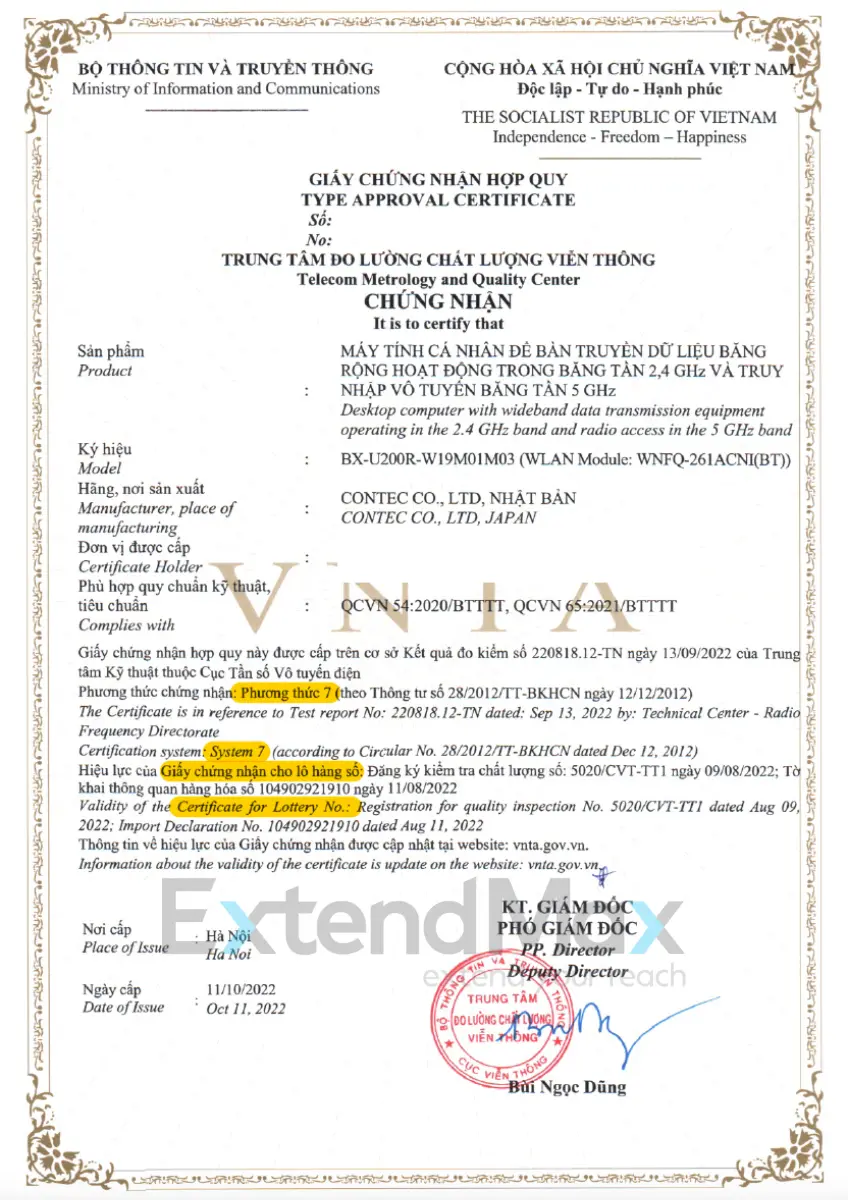
Template of Conformity Certificate according to Method 7 of Vietnam MIC
The process of conformity certification following method 7
Since conformity certification under method 7 is for a specific shipment, the first requirement is to have an actual shipment to proceed with the certification process. The conformity certification process under method 7 for domestically manufactured products differs slightly from that for imported products, as detailed below.
| Steps | Domestic manufactured goods | Imported goods |
| Step 1 | Production of a product batch | Import a shipment, complete the procedures for state quality inspection registration, and customs clearance. |
| Step 2 | Prepare the conformity certification dossier, including the product list, lot numbers, series numbers of the products, datasheet or spec sheet, and other forms (depending on the specific type of product). | Prepare the conformity certification dossier, including the import documentation set, series numbers list of the products, datasheet or specs sheet, and other forms (depending on the specific type of product). |
| Step 3 | Submit the dossier to the conformity certification organization. | Submit the dossier to the conformity certification organization. |
| Step 4 | The conformity certification organization carries out the certification evaluation steps under method 7 (detailed in the next section of the article). | The conformity certification organization carries out the certification evaluation steps under method 7 (detailed in the next section of the article). |
| Step 5 | The certification organization issues the conformity certificate for the batch. | The certification organization issues the conformity certificate for the shipment. |
| Step 6 | The business conducts the conformity announcement for the product batch. | The business conducts the conformity announcement for the shipment. |
>>> Read more: Comprehensive Guide to Conformity Announcement
Conformity assessment steps for Certification System 7
Step 1: Assessing the Homogeneity of the Batch
The conformity certification organization conducts an on-site inspection to assess the homogeneity of the batch. In practice, this step may be decided upon by the conformity assessment organization to be performed or not.
Step 2: Sampling for Testing
The conformity certification organization collects test samples using a statistical sampling method to ensure representativeness of the entire batch. The number of samples must be sufficient for testing and sample retention. Depending on the characteristics, size of the product, and the criteria to be tested, the number of samples can be one or more.
Step 3: Assessing the Conformity of the Test Samples
Samples of goods or products are tested at a designated laboratory, a laboratory registered in accordance with the law, or one recognized under mutual recognition agreements (MRA). The type of laboratory accepted for testing is regulated by the governing body of each group 2 product sector. Testing criteria for performance, safety, and reliability of the products and goods are conducted according to the limits and testing methods specified in the technical standards.
Step 4: Conformity Assessment
Based on the test results of the samples and the accompanying batch documentation, the conformity assessment organization reviews and evaluates the characteristics of these products and goods against the standards and regulations.
Step 5: Conclusion on Conformity
If the number of non-conforming test samples falls within the allowable limit, the batch of goods or products is deemed to comply with the regulations and will not be issued a conformity certification. If the number of conforming test samples meets the allowable limits within the standards and regulations, the batch of goods or products is considered to comply with the regulations. The certification organization will issue a conformity certification for the batch.
Validity of Conformity Certification by Method 7
The test results and conformity certification by method 7 are only valid for that specific batch of products or goods. If a business produces or imports a different batch of products or goods, conformity certification must be conducted again for the new batch.
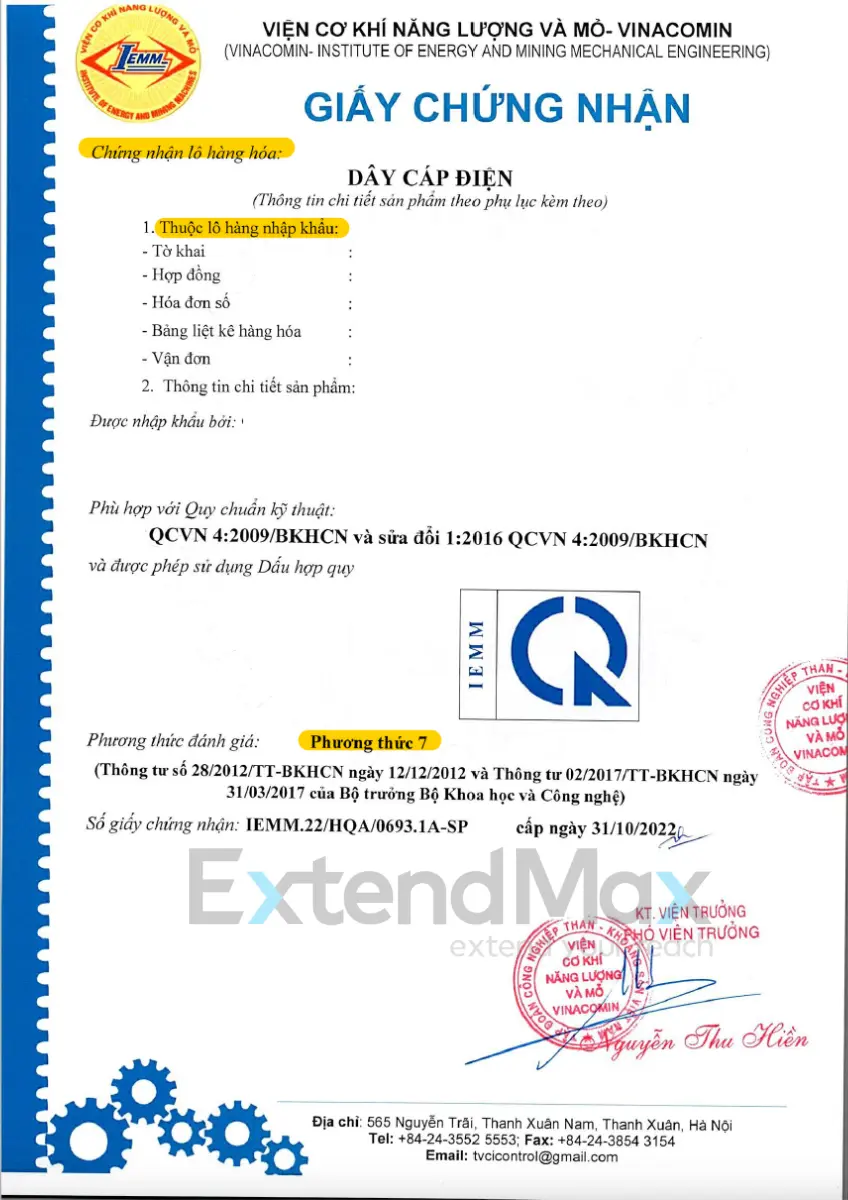
Template of Conformity Certificate according to Method 7 for products under MOST managing scope
Benefits of Conformity Certification by System 7
Conformity certification by method 7 is often applied to many different types of products, especially those requiring strict quality control and high safety standards. This certification method brings benefits to consumers in terms of using quality and safe products and goods. It also benefits state management agencies by making it easier to manage imported and domestically produced products.
>>> Discover now: Guide for market entry requirements and conformity certification method 7 for electric fans
Limitations of Conformity Certification by Method 7
Due to the requirement that products or goods must be certified by batch, the cost of testing and certification can become a burden for importing businesses. Additionally, certification costs are also allocated into the selling price of goods, leading to higher prices.
In some cases, especially for ICT goods, the cost of testing and certification by method 7 can be higher than the import value of the batch.
Notes When Implementing Batch Conformity Certification
Organizations and individuals producing or importing need to pay attention to the following when implementing conformity certification by method 7:
- Sampling is usually done by the conformity certification organization. Businesses are not allowed to take samples themselves.
- Testing must be carried out on samples selected by the conformity certification organization, sealed by the certification organization.
- Test results on samples without the seal of the conformity certification organization will not be accepted for certification.
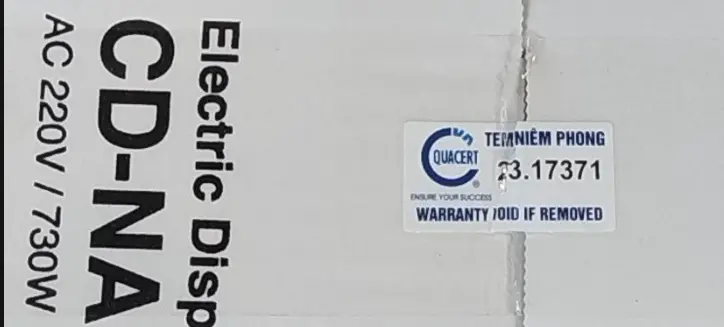
Seal of certification body for conformity certification method 7
Trends in Applying Consignment Conformity Certification
Currently, the application of conformity certification by method 7 is not increasing globally or in Vietnam. This is due to a trend in state management across countries to create a more favorable business environment while still ensuring consumer rights. Many countries are shifting from applying method 7 to applying method 1 and method 5, combined with enhanced state management in post-market surveillance.
In Vietnam, the Ministry of Science and Technology is one of the pioneers in drafting technical regulations, shifting a large number of products from conformity certification by method 7 to method 1.


